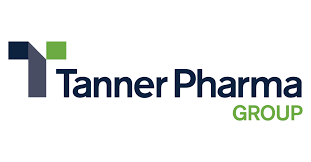Top 8 Benefits from a Stress Management Training for Employees
Stress in the workplace is a such a counterproductive force that an organization or team with high levels of it is working with the equivalent of one hand behind the back and a brain divided against itself.
The statistics lay it out in black and white: Workplace stress costs American business $407 billion a year in everything from medical bills to absenteeism to recruiting and training costs, reports University of California Irvine researcher Peter Schnall, founder of Healthywork.org.
Stress drives disengagement, and that kills job satisfaction, which are two of the big reasons why leaders and human resources departments need to safeguard their talent by making sure staff has the tools to manage demands and pressure and keep stress levels down. Payoffs from our stress management program include:
1. Increased productivity. Stress constricts the brain to the perceived crisis of the moment, which takes attention away from the task. It requires more effort to do the job when you’re stressed, which results in it taking longer to finish the task. Stress management skills increase focus and performance.
2. Reduced medical costs due to stress-related illness and absenteeism. Our stress management training shows how the fight-or-flight response alters major systems in the body, which can lead to everything from heart disease to diabetes. Health problems from workplace stress and the depression it can lead to at its end stage, burnout, cost companies multiple times more to treat than the average workplace malady (Goetzel). Managing stress stops the absenteeism revolving door and dramatically increases health and well-being.
3. Increased engagement — and revenue as a result. Stress leads to negative emotions, cognitive exhaustion, and cynicism. All of them can lead to a disengaged workplace. Healthy, positive, focused minds result in engaged employees, which energizes output, attitudes, and revenue (up 23% in one study — Munz, Kohler).
4. Less conflict and emotional contagion. Stress activates the aggression hub in the brain, which adds to the “fight”-or-flight reaction. It makes us lash out at others, known as stress-induced displacement aggression, and we feel better afterwards. Stress relief helps people feel better so they don't need to lash out.
5. Increased attention and reduced distraction. Attention is the chief productivity tool. Research shows that the more attention you have, the less stress and vice-versa. A good employee training builds focus and concentration by arming staff with tools to keep the stress of distractors, such as information overload and social media, at bay.
6. Improved retention. High stress levels drive good employees to leave companies. Some 40% of employees who exit companies do so because of stress. This puts your top talent and bottom-line at risk. Employees who face mounting health problems as a result of stress quickly become disengaged and open to opportunities elsewhere. Give employees proven tools to relieve stress, and commitment grows.
7. Dramatically fewer mistakes and errors. Stress hijacks the modern, rational brain and puts an ancient part of the mind in charge. It results in System 1 thinking — impulsive, shallow, jump-off-the-cliff. Your team can make major mistakes when caught up in costly, knee-jerk, irrational emotions, reactions our stress management programs help them avoid. Stress relief makes sure your team is using their rational faculties.
8. Increased innovation. The distraction of stress shuts down creativity. It keeps the mind ruminating about a false belief, instead of having the calm space to imagine. The seeds of innovation come from allowing the mind to wander and play, which stress suppresses.


.png)






































